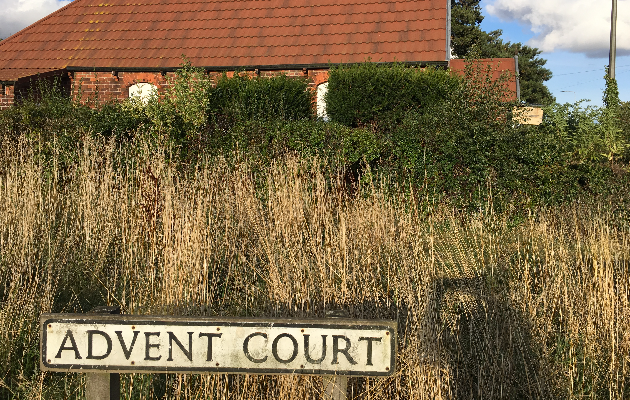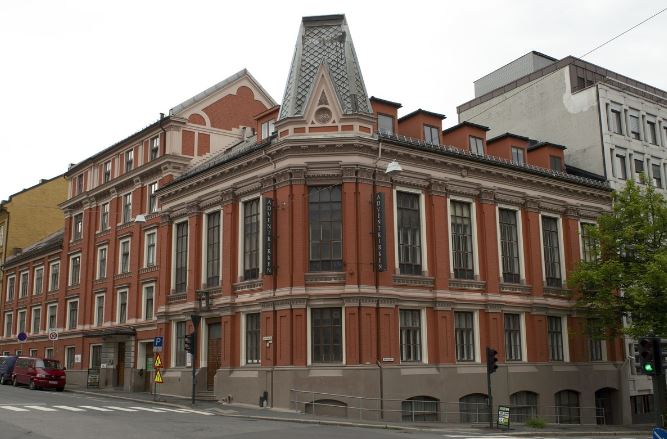31 January 2023| Silver Spring, USA [Audrey Andersson]
Today Ebenezer is not a common name. One could almost say it’s a seasonal name, which appears every December. A very unscientific experiment among friends and colleagues seemed to confirm this. They all associated the name with Ebenezer Scrooge, the main character in Charles Dickens’ A Christmas Carol. Although it has nothing to do with the true Christmas story of a Savior who was born to rescue the world, its purpose is to remind people to love their neighbor.
In the Bible we meet a different Ebenezer. The prophet Samuel set up a memorial stone and called it Ebenezer (1 Sam. 7:12). The literal meaning of Ebenezer is “a stone of help”. On this occasion it was to remind the Israelites that the Lord had helped them up to that point. After a series of defeats, leading to the loss of the ark of the covenant, Israel repented, and the Lord gave them victory. Following the victory, Samuel set up the Ebenezer. It was to be a place where they could bring their children and tell the stories of God’s goodness, mercy, and deliverance.
Wherever you go in the world, you will find memorials in different shapes and sizes: statues, arches, pyramids, and buildings, all telling a story, so events that happened long ago are not forgotten.

Remembering God’s leading
Ellen G. White understood the importance of remembrance, of telling the stories of God’s leading. On several occasions she wrote about this need to remember. In Life Sketches we read:
“In reviewing our past history, having traveled over every step of advance to our present standing, I can say, Praise God! As I see what the Lord has wrought, I am filled with astonishment, and with confidence in Christ as leader. We have nothing to fear for the future, except as we shall forget the way the Lord has led us, and His teaching in our past history.”*
To paraphrase, when we remember God’s past leading, we can go forward with confidence. At a time when the world seems to be spinning out of control, with wars, earthquakes, and disasters happening so quickly that events hardly have hit the headlines before they are replaced by the next unimaginable event, how do we remember? How can we have the kind of confidence that Ellen G. White is talking about?
One way is collective and personal “Ebenezers”. Adventist Heritage Ministries is a ministry dedicated to helping us remember. Originally called Adventist Heritage Properties, it was founded in 1981 with the motto “The Past With a Future”. Its name was changed to Adventist Heritage Ministries in 1994, and today it owns and curates four heritage sites of particular significance for our church history.
As its name suggests, the Miller Farm was the home of William Miller, who, in the late 1830s, up to 1844, preached the imminent coming of Jesus. Near the house there is a chapel built by Miller himself, and a rock, known as Ascension Rock. It is doubtful that believers stood on the rock waiting for Jesus, but it is a symbolic reminder of the hope of those who waited, longing, hoping, and expecting to see Jesus on October 22, 1844.
Hiram Edson’s farm is land and a barn connected with Hiram Edson’s experience shortly after the Great Disappointment. Edson’s insights regarding the heavenly sanctuary with its two compartments and Jesus moving from the holy to the most holy place led to the correct understanding of what happened in 1844. Jesus was not coming back then; rather it was the beginning of the investigative judgment. Jesus was coming back soon, however.
The Adventist Historic Village is located in Battle Creek, Michigan. So much early Adventist history is centred in Battle Creek. Many of the homes and buildings are in the Adventist Historic Village, and nearby there are other sites, such as Oak Hill Cemetery and the graves of the White family.
The Bates home in Fairhaven, Massachusetts, is where Joseph Bates grew up. His story is of interest not only to Seventh-day Adventists but also to the people of Fairhaven, who see him as a significant historical figure, apart from his role as a founder of the Seventh-day Adventist Church.
Powerful witnesses
Each site is different, yet each is a powerful witness to the goodness of God and His faithfulness to His people in times of devastating disappointment, when it seemed that darkness surrounded them and they felt as if they had been abandoned. The sites tell the stories of imperfect men and women. They had their flaws, just as we do, yet they were used by God to tell others about the good news of the judgment and the end of pain and suffering in this world, and to prepare for the second coming of Jesus.
These are not dead buildings, absorbing time, energy, and financial resources. These are living centres where Adventist history comes to life, where we can remember the leading of the Lord and learn the lessons of the past. They are places to which young people can come and be inspired, and to which people who do not know our history can come and learn about a God who is faithful. They stand like beacons telling of the goodness of God.
These are just a few places; there are many others. It is important to find them, look after them, and let them tell their stories.

It has been said, “Those who cannot remember the past are condemned to repeat it.” If we do not know our collective history, we are in danger of repeating the mistakes of the past. The same could be said of our personal history. Near my bed are two framed texts that are very precious. When I look at them, I remember the circumstances under which they became meaningful. It always gives me comfort, courage, and renewed trust in the Lord. He does not fail.
As we begin 2024, let’s look for individual and collective Ebenezers and remember God’s leading in the past, so that we may face the new year with hope and confidence.
* Ellen G. White, Life Sketches (Mountain View, Calif.: Pacific Press Pub. Assn., 1915), p. 196.
This article first appeared in the January edition of Adventist World
Featured image: The Ulceby church building was the first to be erected in the UK. While there were two other recognised congregations in Grimbsy and Southampton in the late 1880’s they met in rented halls.
‘A Passion for Mission’ is the title of a book by David Trim and published by the Trans-European Division in 2019 with a short documentary film, highlighting the early origins of the Seveneth-day Adventist Church in Europe through to the continued challenges of outreach in largely secularised societies.
To read more about the development of the church in the UK between 1860 and 1888 go to
Adventist History UK
To read more about the story of the Betel, Oslo church and how it has developed into a Centre of Influence go to ‘New Centre of Influence Dedicated in Norway’.
Audrey Andersson serves as a vice-president of the General Conference, Silver Spring, Maryland, USA.



